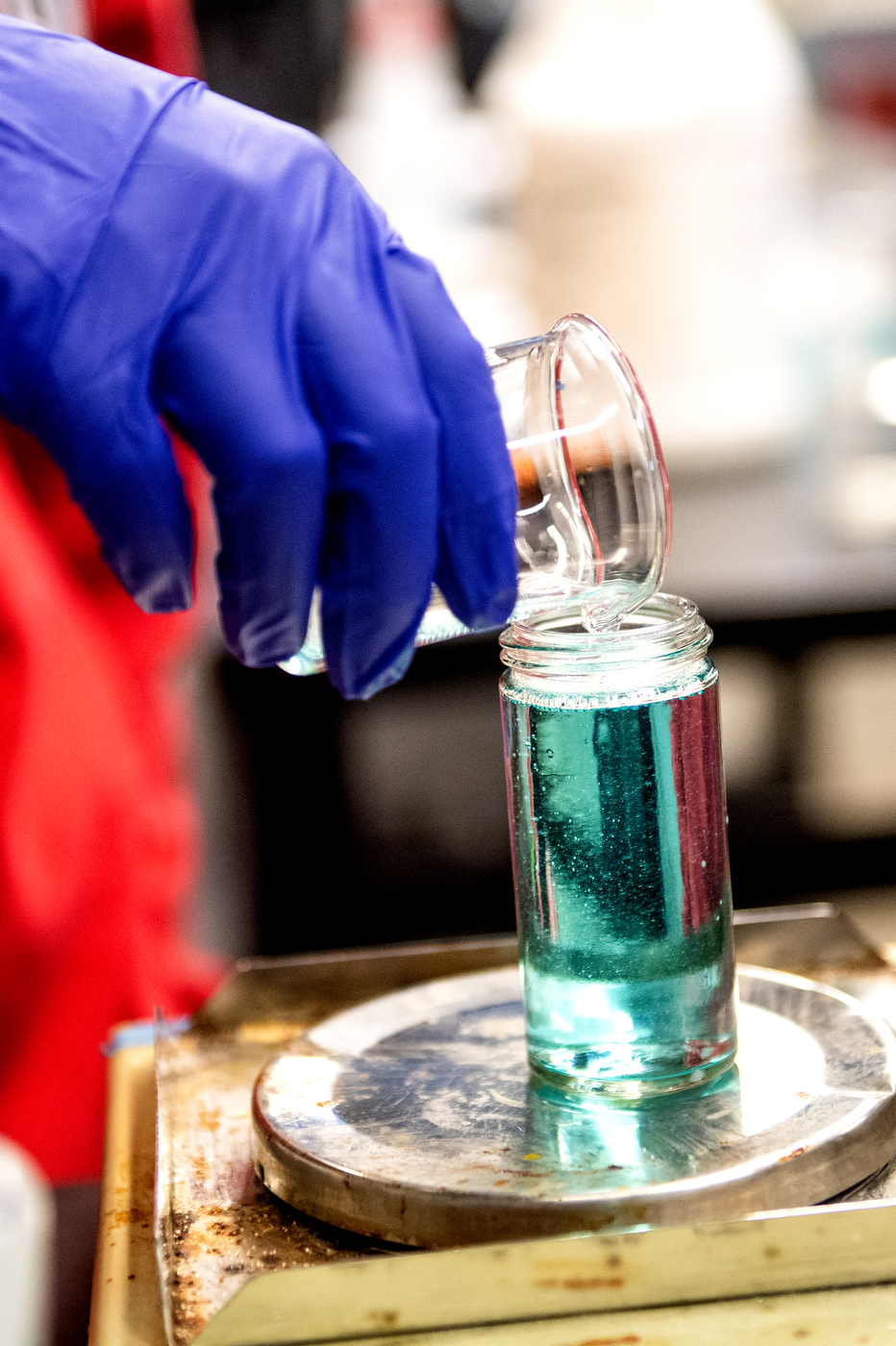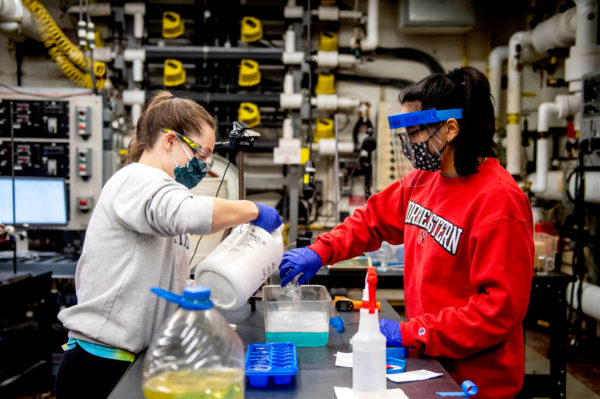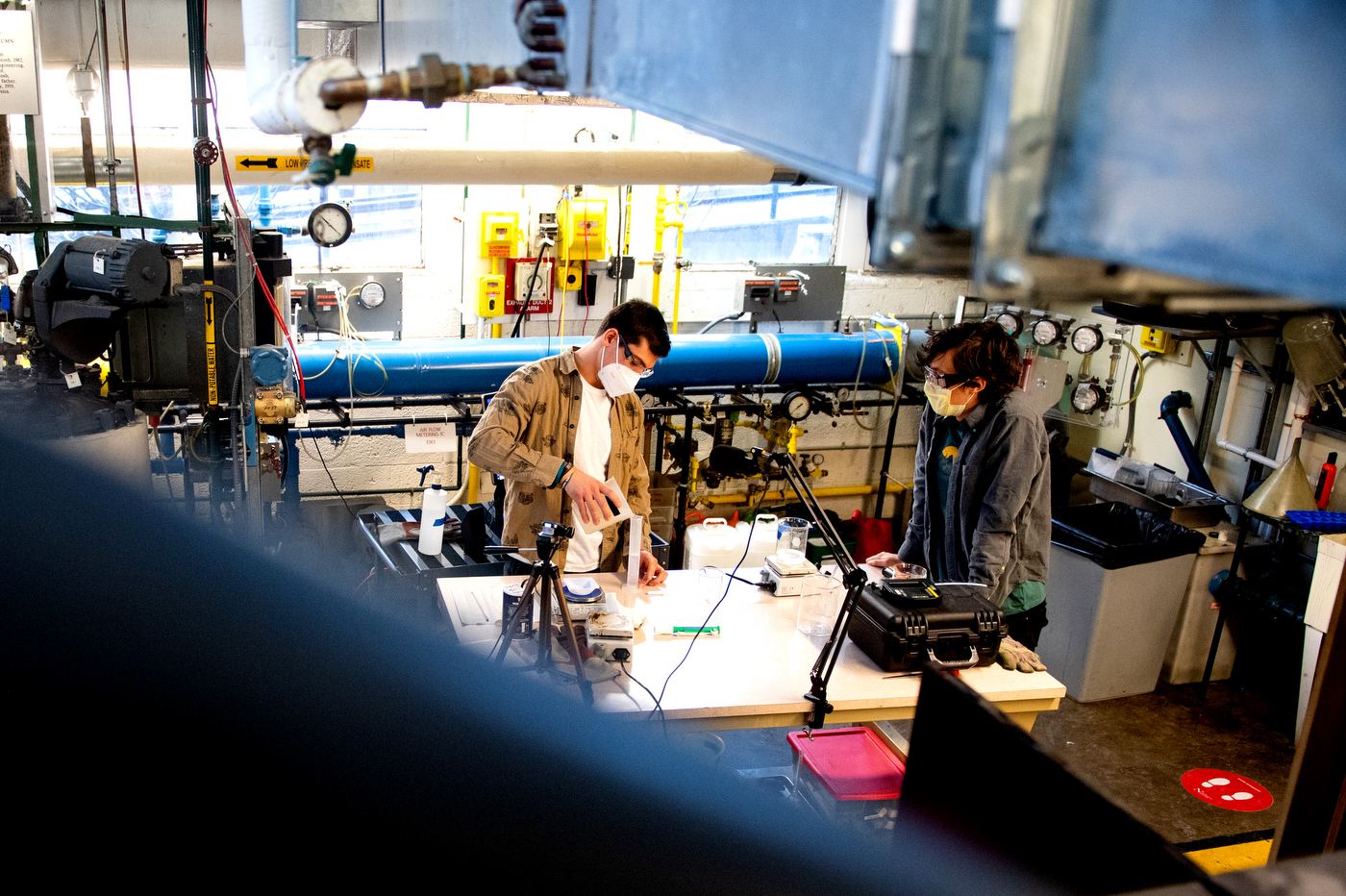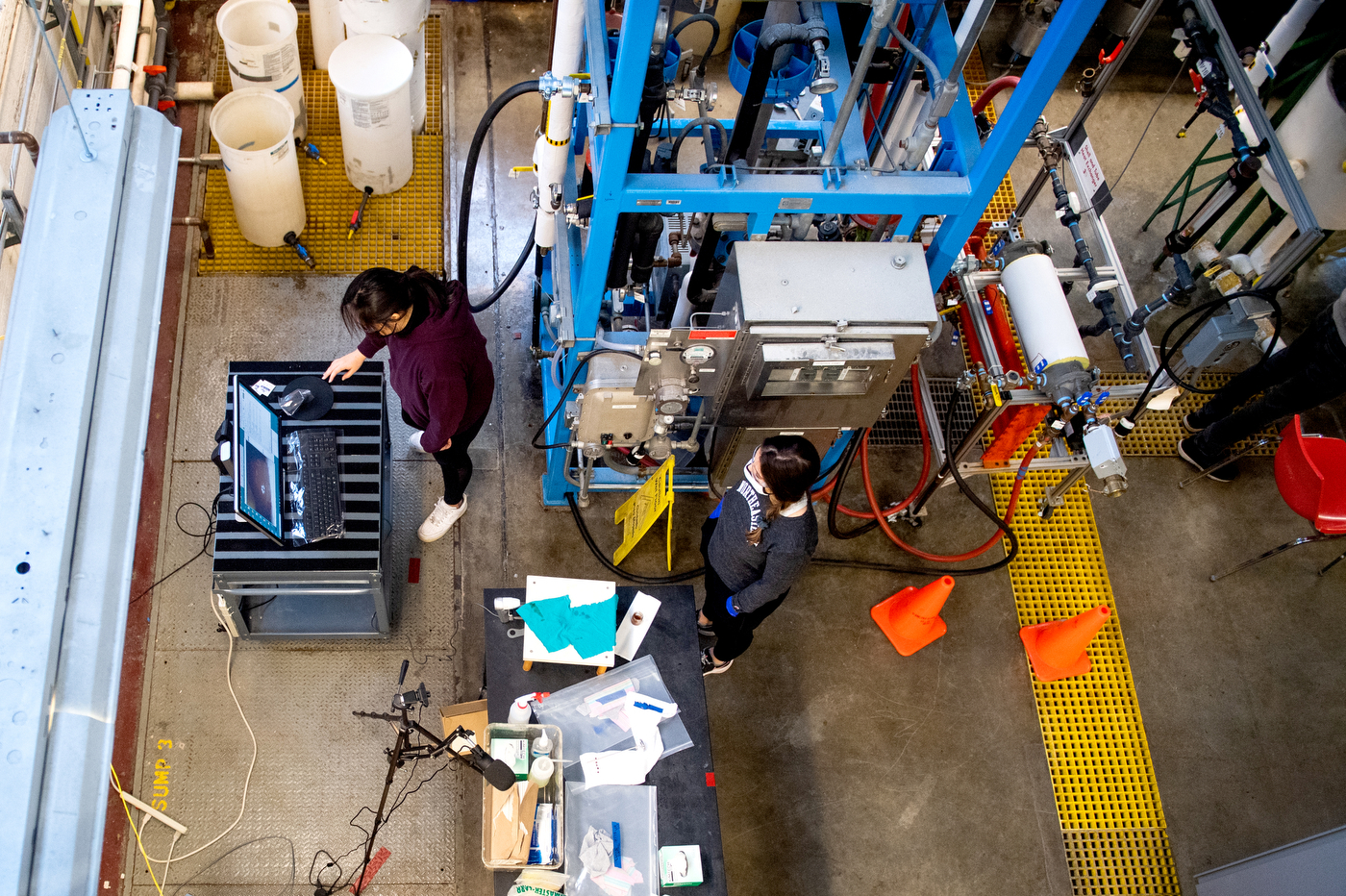Students Working Together to Perform Experiments
Whether our engineering students are on campus or at home, they can still conduct experiments to see how things work.
Running experiments–at home and in the lab
Main photo: Lauryn Rodney, who studies chemical engineering, works on an experiment in the Mugar Life Sciences Building. Photo by Matthew Modoono/Northeastern University
If you walked by one of Tracy Carter’s chemical engineering courses last week, you would’ve seen students testing the cohesion of household items: water, soapy water, vegetable oil—even ketchup and mayo were on the table. Some of those students were in the lab in the Mugar Life Sciences Building, and some joined from home via video, displayed on giant TV screens.
The course is designed to give students the tools they need to design their own experiments, says Annabel Devault, a third-year student of chemical engineering and biochemistry, who was among those in the lab.
For this project, students designed experiments that would test the cohesion of different liquids, determining how tightly the molecules in each substance clung together.
 |  |
 |
Students Natalie Vogel and Annabel Devault, who are both studying chemical engineering, work on an experiment in the Mugar Life Sciences Building. Photos by Matthew Modoono/Northeastern University
Devault and her group experimented by filling up jars with water, soapy water, and other household items, covering the opening with a fine mesh screen, then tipping the jars upside down. Water doesn’t flow through the mesh, as you might expect—the water molecules cling so tightly together that the liquid stays inside the jar. It isn’t until the jar is tipped at an angle that the surface tension breaks, and water pours out.
“It’s actually pretty cool to watch,” Devault says.
On this particular day, Devault’s partner Natalie Vogel tipped the liquid-filled jars, and Devault measured the various angles at which the substances began leaking out. The other two members of their team joined via video call, recording the measurements and tracking the data.
“It’s worked really well to have two people at home and two in the lab,” Vogel says. “This way, there’s people who can do everything we need to record on the computer while the experiment is in progress.”
 |  |
Left: Ryan Stone and Chris Meehan, who are both studying chemical engineering, work on an experiment in the Mugar Life Sciences Building. Photos by Matthew Modoono/Northeastern University
Over the summer, Northeastern introduced NUflex, a hybrid learning model that utilizes new technology and flexible schedules to enable students and faculty to learn and teach both in-person and remotely. A scheduling feature of NUflex allows students to reserve a spot to attend class in-person while maintaining appropriate class size and spacing based on public health guidelines.
Vogel, Devault, and their classmates take turns attending the lab in person, and in this instance, the two students in the room used web cameras to bring their remote classmates into every step of the process.
“For the most part it goes smoothly, though every once in a while, the internet would be tough, so we’d have to scream our results across the lab so they could hear us at home,” she adds with a laugh.
After they finished the experiment, Devault and Vogel joined their classmates on a video call to go over the results.
“It’s been nice to have that kind of flexibility,” Devault says.
by Molly Callahan, News @ Northeastern